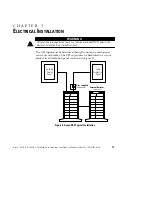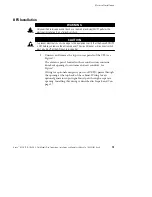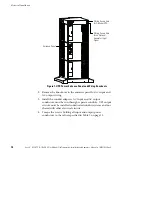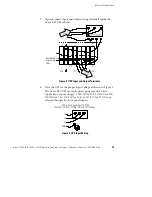
1
Avaya
t
RS9 UPS (9–18 kVA, 9-Slot Models) Site Preparation, Installation and Operator’s Manual
S
164201543 Rev A
C H A P T E R
1
I
NTRODUCTION
The Avaya
t
RS9 uninterruptible power system (UPS) is a modular UPS
that contains battery modules and power control modules (referred to as
power modules). These modules plug into a rack cabinet structure
containing additional control, communication, and display functions
that enable integrated control of all power modules. The UPS is housed
in a single cabinet, with extra battery capacity housed in auxiliary
battery cabinets.
Power Modules
The pluggable power modules can be removed and replaced
(hot-swapped) without powering the UPS down if the UPS has sufficient
redundant capacity. Battery modules may also be hot-swapped for
maintenance. Power control circuitry in the cabinet senses problems in
power modules, and automatically transfers control and load to the
remaining power modules.
All power modules share the load requirements equally. For example,
three power modules are capable of supplying a total of 9 kVA. If a load
requires only 4.5 kVA, each power module supplies 1.5 kVA to the
output. If one power module is removed or for some reason fails, each of
the two remaining power modules would supply half of the load, or
2.25 kVA. In other words, redundancy exists when the load can be
supplied by less than all of the installed power modules.
Battery Configurations
The Avaya RS9 UPS has two different options for additional battery
configurations:
S
External Battery Module Cabinet (EBMC)
- this cabinet is recommended
for applications that require less than one hour of run time. One
EBMC can be connected to the UPS.
S
Extended Battery Cabinet (EBC A through F)
- this cabinet is recommended
for applications that require more than one hour of run time. Up to
two EBCs can be connected to the UPS.








































